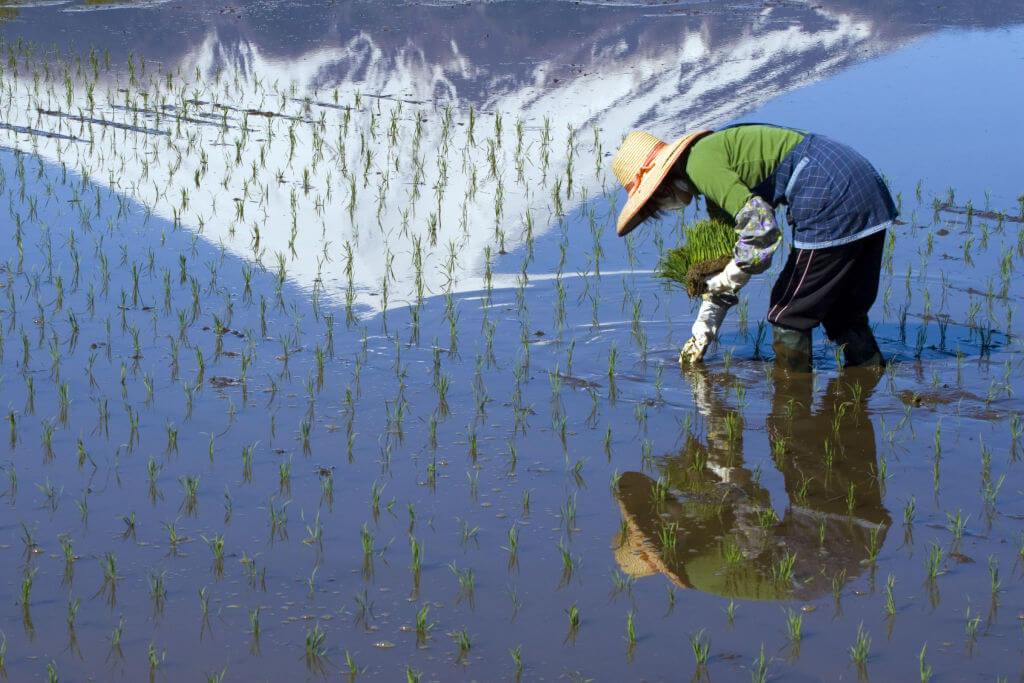In the land of cherry blossoms and ancient traditions, Japan excels in preserving its cultural heritage and shows a great commitment to sustainable practices, even in the world of food, including Japanese sweet potatoes.
Among the many sustainable delights that Japan has to offer, Japanese sweet potatoes hold a special place. Without reservation, let’s take a deep dive into the concept of food sustainability in Japan and explore how it is practiced. Discover Japanese sweet potatoes’ unique qualities and other sustainable food options.
Table of Contents
ToggleWhat Does Food Sustainability Mean in Japan?
Food sustainability in Japan is a concept that addresses food production with environmental, social, and economic effects. It tries to preserve natural resources, minimize waste, support local communities, and encourage healthier and better food choices. Japanese cuisine, highlighting seasonality, local ingredients, and minimal waste, perfectly embodies sustainability principles, creating a balanced and responsible approach to food.

In Japan, food sustainability goes beyond environmental considerations. It encompasses a perspective that considers the broader impacts of food on society and the economy.
By valuing local producers, reducing food waste, and promoting nutritious choices, Japan’s culinary traditions reflect a deep commitment to sustainability. This approach not only nourishes the body but also respects the environment and supports the well-being of communities. Making food sustainability an essential part of Japanese culture.
Are you looking to enjoy more Japanese snacks made by local makers? Check out Sakuraco! Sakuraco delivers traditional Japanese snacks, sweets, tableware, and more from local Japanese makers right to your door, perfect for a pleasant snack time at home!

How Food Sustainability Is Practiced in Japan:
Embracing Local and Seasonal Ingredients:
Japanese cuisine embraces the concept of shun (旬), which means using ingredients in their prime season. The kanji character 旬 translates to shun and means the peak or best time for something. It signifies a deep understanding and respect for nature’s cycles and the natural rhythms of the seasons.

By sticking to shun, Japanese culinary traditions show the importance of using ingredients when they are freshest and most flavorful. This approach ensures a fantastic taste experience and matches with sustainability practices. By utilizing local and seasonal ingredients, Japan reduces its need for long-distance transportation. As a result, it minimizes the carbon footprint tied to food production and distribution.
Minimizing Food Waste
Without a doubt, Japan tries to reduce food waste with various methods. One concept is mottainai (もったいない), which expresses regret over wasting resources. The kanji characters 勿 (motto) and 体 (nai) combine to form mottainai, which translates to “what a waste” or “too good to waste.” In this case, the term encapsulates the deep respect for resources and the desire to maximize their value.
Similarly, restaurants and households in Japan actively strive to minimize food waste by adopting innovative approaches. Moreover, they find creative ways to utilize every part of an ingredient, including vegetable peels, fish bones, and other typical discarded scraps.
Overall, by embracing mottainai, Japanese cuisine showcases its ingenuity and ability to transform what might be considered waste into delicious and inventive dishes. All in all, this practice reduces food waste and encourages a sustainable mindset, with individuals trying to be mindful of their consumption habits and the use of resources.

The Sustainability of Japanese Sweet Potatoes:
One shining example of sustainability in Japanese cuisine is the humble sweet potato, known as satsumaimo (さつまいも). Grown abundantly in Japan, this versatile vegetable has characteristics that match sustainable food practices.
In Japan, there are various types of sweet potatoes that contribute to the country’s rich culinary heritage and sustainable farming practices. One notable variety is the purple-skinned sweet potato, murasaki-imo (紫芋). This vibrant tuber adds color to dishes and offers various health benefits due to its high antioxidant content. Its deep purple flesh contains vitamins, which have been linked to anti-inflammatory properties and cardiovascular health.

Orange Japanese sweet potatoes
Another popular variety is the orange-fleshed sweet potato, anno-imo (黄芋). With its golden hue and slightly sweeter taste, this sweet potato is undoubtedly used in savory and sweet preparations. Most important, this orange sweet potato is rich in beta-carotene, vitamin A, and dietary fiber; it provides a nutritious and sustainable alternative to other starchy vegetables.
Beni-imo Japanese sweet potatoes
Additionally, there is the beni-imo (紅芋), a reddish-purple light brown sweet potato that stands out for its distinctive chestnut-like flavor. People significantly use this unique variety in traditional Japanese confections and desserts, adding a delightful earthiness and sweetness.
Not to mention, the cultivation of these sweet potato varieties in Japan follows sustainable farming practices. That is to say, farmers prioritize soil health and natural pest control methods, minimizing the use of pesticides and chemicals. They also utilize crop rotation techniques, which help maintain soil fertility and prevent diseases.

Low Environmental Impact
To summarize, Japanese sweet potatoes require minimal pesticides and fertilizers, making them an environmentally friendly crop. Moreover, their cultivation helps reduce the overall ecological footprint of agriculture.
Versatile Cooking
In like manner, Japanese sweet potatoes offer various culinary possibilities, showcasing their versatility in various traditional recipes. One popular preparation method is yaki imo, grilled sweet potatoes. To this end, Japanese sweet potato yaki, imo involves roasting the sweet potatoes over an open flame or charcoal fire, resulting in a caramelized exterior and a tender, creamy interior.
This cooking method undoubtedly enhances the potatoes’ natural sweetness, creating a delightful balance of flavors. During autumn and winter, people often enjoy yaki imo as a street food snack, providing warmth and comfort on chilly days.
Other Types of Food Sustainability in Japan:
In addition to the beloved Japanese sweet potatoes, an array of other sustainable foods grace the tables in Japan. One notable example is the vibrant world of farmers’ markets. These bustling markets connect consumers and local producers directly, significantly allowing individuals to purchase fresh and seasonal produce directly from the farmers.

By shopping at farmers’ markets, people actively support local farmers, helping sustain regional agriculture while reducing the environmental impact of long-distance transportation and packaging.
Furthermore, traditional fermented foods are significant in Japanese cuisine and sustainability efforts. In Japan, people employ fermentation as an age-old preservation technique to transform surplus ingredients into flavorful and nutrient-rich foods. Staples such as miso, soy sauce, and pickled vegetables offer unique tastes and textures and contribute to reducing food waste.
Fermentation will transform surplus vegetables, soybeans, or grains into long-lasting and versatile condiments and side dishes. This practice aligns with the principles of sustainability, by maximizing the use of ingredients and reducing waste while preserving and enhancing the nutritional value of the food.

Japan’s commitment to food sustainability is a testament to its love for nature and the desire to create a better world. Japan’s culinary traditions deeply ingrain sustainability. Through the traditional cultivation of Japanese sweet potatoes and the practice of mottainai. Moreover, it is a balanced approach that nourishes the body, respects the environment, and supports local communities.
What do you think about sustainability in Japan? Is there any information we need to include? Let us know in the comments below!









